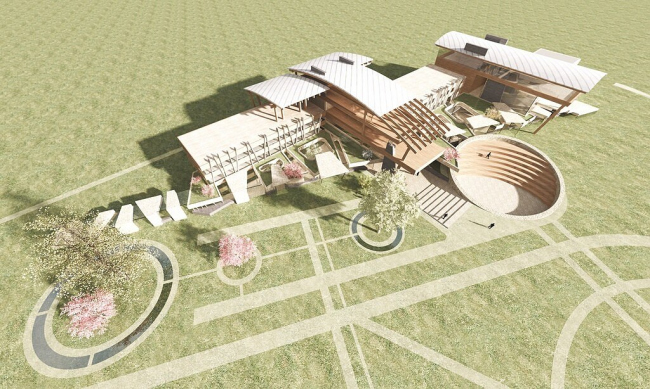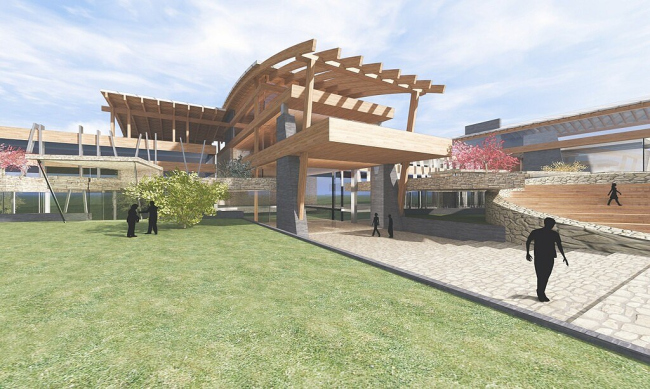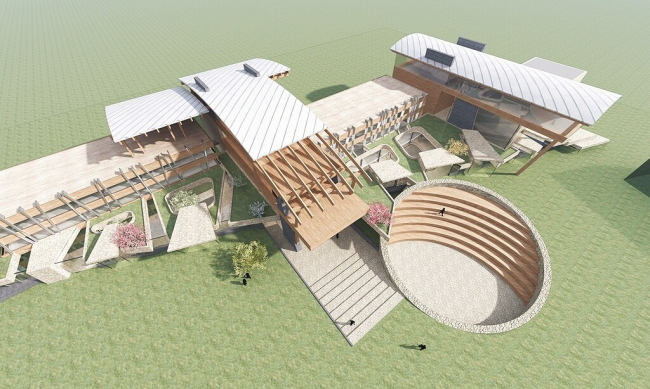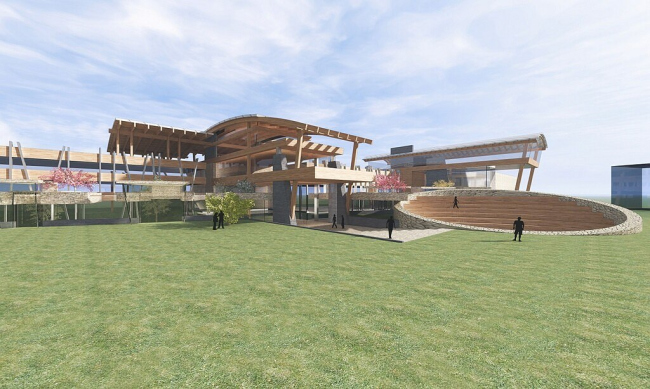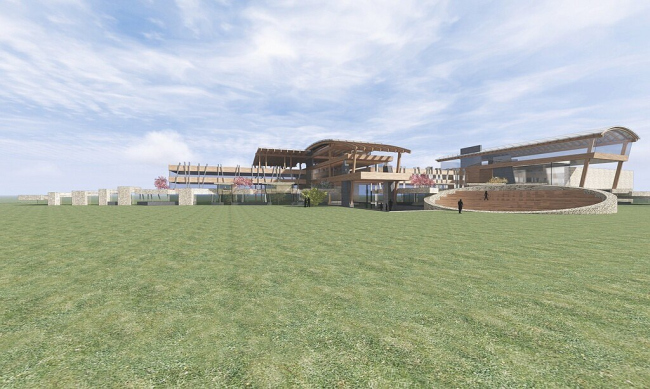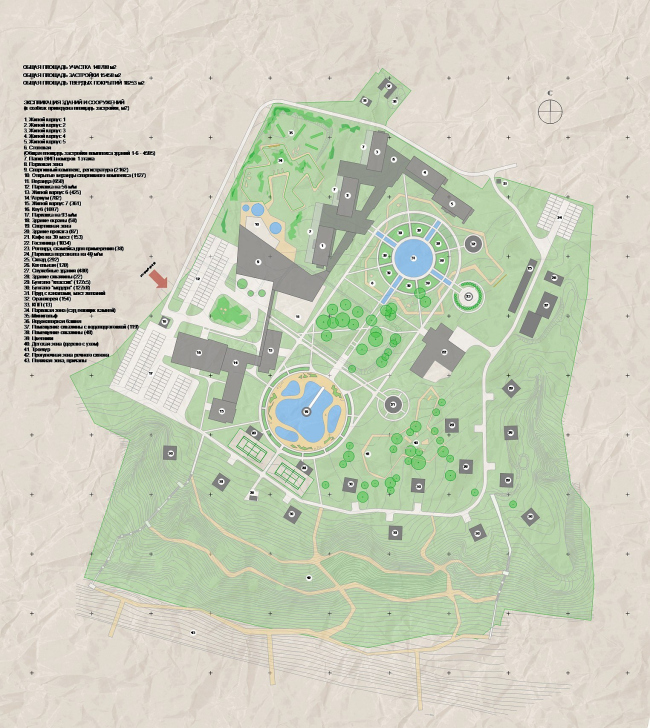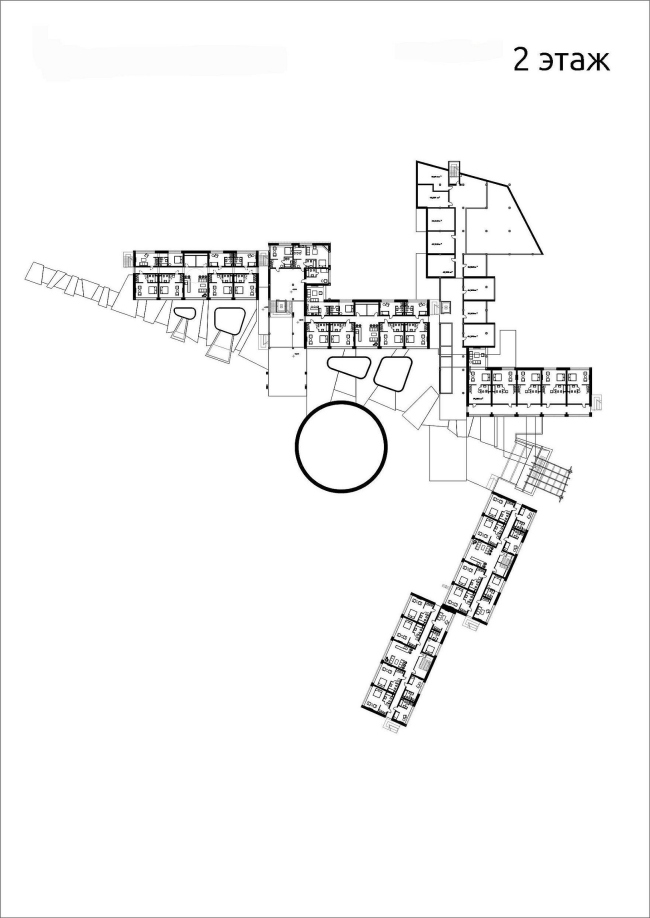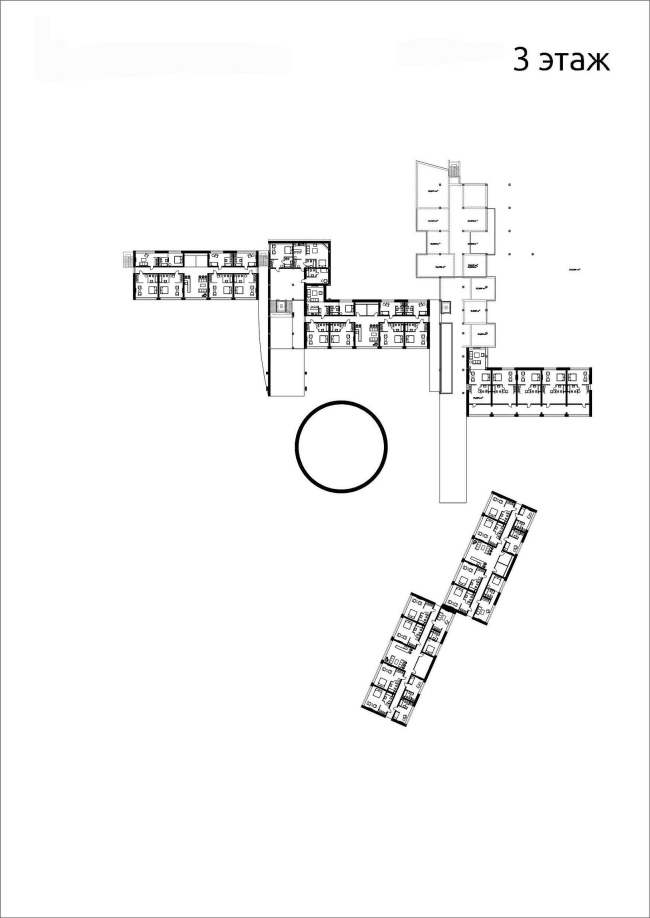|
Roman Leonidov architectural office is developing a reconstruction concept for a former "pioneer camp" (the Soviet name for a children's summer camp - translator's note) located in Moscow region.
The
initially challenging task assigned by the commissioner - to preserve and use
the 1960's buildings and make the outdated grim boxes come alive with a new
architectural image - was rendered still more challenging by the accompanying
circumstances. First of all, the bright and unusual piece of architecture was
to be created "for a reasonable budget". Second, and worst of all,
the existing lightweight foundations would not have stood any extra load. And
even though the authors were tempted to start from scratch, they ultimately
found a brilliant solution of this problem.
The concrete boxes of the residential premises are masked with shells of glued
wooden structures. These structures are used both for as the jacketing of the
facade and as the supporting elements that, not unlike columns, stand out
beyond the contour of the bearing-wall buildings. The advantages of such a
solution are pretty obvious: the glued wooden structures are light; they do not
require massive foundations, and do not form the "cold bridges" at
the joints with other types of materials. What is also important is the fact
that this environment-friendly material allows creating sophisticated
sculptural compositions that, with all their expressiveness, do not wreak havoc
on the construction budget.
Totally, the architects were to reconstruct five buildings, three of which were
blocked together in a "stairway" array, with the other two standing
at a 90-degree angle to them. In order to avoid spending his resources for each
separate "box", Roman Leonidov groups the buildings: on the layout,
he draws a large triangle, into which he inscribes all the five volumes, each
of which he dresses into the wooden "camouflage" filling the space
between the buildings with a few elements of landscape design. The multi-level
landscape space and the diversity of the new "skin" give the former
"pioneer camp" a totally new image: now it is not just five concrete
parallelepipeds but a new composition that is dynamic and diverse. At some
places the facade is dominated by a fancy roof with a pergola, at some places -
by broad horizontal stripes pierced with slanting square-section beams.
The centerpiece of the complex is the round sunk-in amphitheater, around which
the architect forms a stern orthogonal system of dormitory blocks and their
connective galleries. The amphitheater is meant for various open-air events
while the galleries provide every person in the health resort easy access to
all of its facilities. Now the campers will be able to enter the cafeteria, the
gym, and the medical, recreational, and public areas without having to go
outside. None
None
None
None
None
None
None
None
None
None
|
